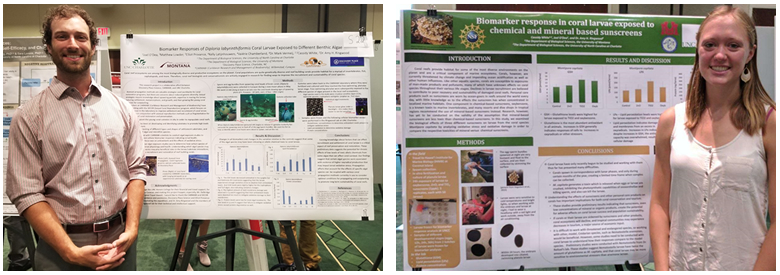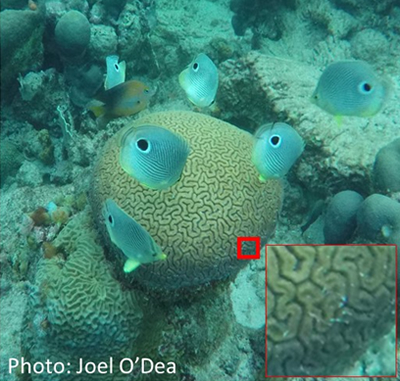The health of the world’s coral reefs garners much media attention, especially related to bleaching and global warming and concerns about chemicals, such as sunscreens and other toxic elements, that could be causing damage to these fragile ecosystems.
Two undergraduate students this summer worked with mentor Amy Ringwood, UNC Charlotte associate professor of biology, to research coral restoration and conservation issues.
UNC Charlotte undergraduate Joel O’Dea performed research with Ringwood in the Caribbean; he was investigating which algal species have a negative or positive effect on the health of corals and their larvae. While in Curacao, O’Dea worked in collaboration with Caribbean Research and Management of Biodiversity and the conservation organization SECORE, as well as staff from Discovery Place Science. His focus was to perform exposure studies on young coral larvae (Diploria labrinthyformis) to different species of algae.
“Determining which species have the most deleterious effects on the larvae, and which ones the corals can compete with, will allow conservationists to create healthier and more successful coral colonies and reef systems,” O’Dea said.
Through a National Science Foundation Research Experience for Undergraduates (REU) award, University of Montana student Cassidy White also conducted research with Ringwood to better understand coral larvae sensitivity. They traveled to the Hawaii Institute of Marine Biology for their studies.

White was in Hawaii during the spawning of the coral species Montipora capitata. She collected fertilized spawn, cultured the larvae and exposed them to three different sunscreens. Two were mineral-based (zinc oxide and titanium oxide) and one was chemical-based (oxybenzone) to determine if certain sunscreens were more ecologically harmful than others. Preliminary data suggested that zinc preparations are the least toxic, but titanium may be almost as toxic as oxybenzone.
O’Dea and White’s projects were timed to take advantage of the limited spawning periods – only a few months out of the year and only for a few days each month, during specific moon phases, Ringwood said.
“Joel and Cassidy were involved in field activities to collect gamete bundles of sperm and eggs that emerged like clockwork from the different species,” she said. She noted this fieldwork required the students to be ready at all hours of the night and day.
Both students characterized their research opportunities as invaluable.
 For O’Dea, he was able to travel to the front lines of contemporary marine conservation efforts and work with some of the leading coral biologists. “I’ve been able to learn primarily by doing and communicating with established researchers on a peer-to-peer basis,” he said.
For O’Dea, he was able to travel to the front lines of contemporary marine conservation efforts and work with some of the leading coral biologists. “I’ve been able to learn primarily by doing and communicating with established researchers on a peer-to-peer basis,” he said.
Being able to connect lessons from the classroom to the natural world has “fueled my curiosity and love for learning and the environment,” White said. “This REU experience has prepared me for graduate school more than any other of my undergraduate experiences thus far.”
O’Dea’s Curacao expedition was funded by Discovery Place, and alumnus Elliot Provance (’03), director of living collections and exhibitions at Discovery Place, who earned his biology degree with an ecology emphasis, led the trip. O’Dea also received funding from UNC Charlotte’s Honors College through the Delbridge Narron Alumni Travel Award. The National Science Foundation and the University of Montana Honors College provided support for White’s research.
Images: Courtesy of Ringwood and O’Dea – UNC Charlotte Honors Student Joel O’Dea and Elliot Provance, Director of Discovery Place Live Collections, underwater; O’Dea and White present their research at a summer research symposium; coral head surrounded by butterfly fish.








